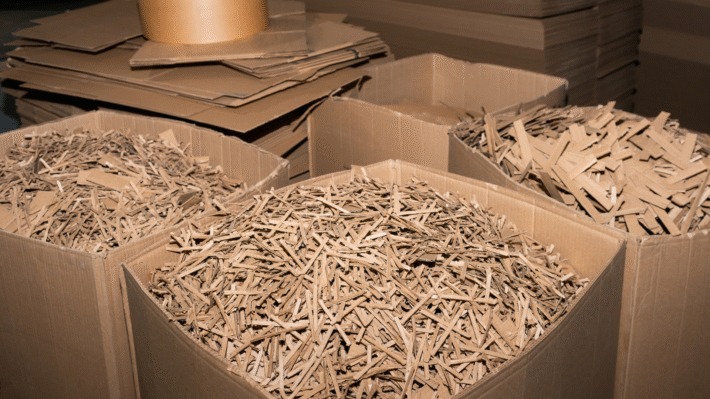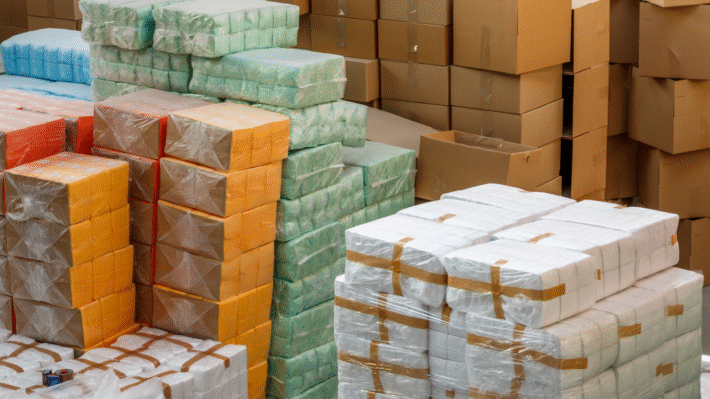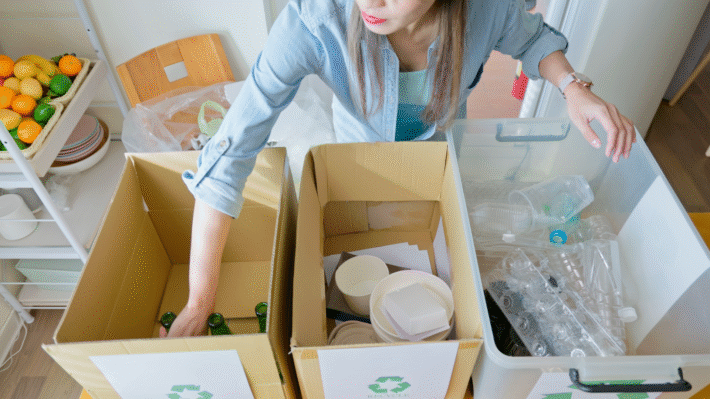Creating a Circular Economy with Compostable and Reusable Alternatives to Single-Use Wipes

Welcome to the wipe revolution! In an age where single-use wipes are cluttering earth’s ecosystems, we have an opportunity to turn the tide and create a wipe that wipes out waste. This article takes a deep dive into transitioning our single-use wipes supply chain into a harmonious circle of use, reuse, and compost – a circular economy. You’ll be wowed with how compostable and reusable alternatives are being designed and innovated, all in the aim of cutting down our impact on Mother Earth. So get ready to journey from the problem-plagued present, through ingenious solutions, process tweaks, tech upgrades, and policy reforms, to a future where a wipe is not a waste! Wipe, wash, compost, repeat… let’s march towards sustainable cleanliness together!
Current Supply Chain Analysis
In our quest to transition away from single-use wipes to compostable/reusable alternatives, we first need a clear picture of the current supply chain. Just like any grand adventure, it all starts with an understanding of the journey. Where do these wipes come from, and where do they go? Let’s dive into it.
Understanding the Wipe Journey
From Raw Materials to Manufacturing
Every wipe starts its life as a bunch of raw materials, primarily rayon and polyester. Now these are some pretty fancy words, but all you need to know for now is that they’re types of plastic. Yep, the same stuff that soda bottles and grocery bags are made from. The raw materials are combined and processed in a manufacturing plant to create the wipes we’re all so familiar with. These processes aren’t exactly easy on the environment, but we’ll circle back to that point in a bit.
Distribution and Consumption Patterns
Once our wipes are all grown up and ready to leave the nest, they’re packed into trucks and shipped all over the country, or even the world. They end up on store shelves, waiting for us to pick them up and take them home. We use them for all sorts of things: cleaning our hands, wiping our kids’ noses, even removing makeup.
Waste and Environmental Impact
After we’re done with the wipes, they usually end up in the garbage. And here’s the kicker: they’re not going to decompose anytime soon. Remember when I said they were made of plastic? Yeah, that stuff doesn’t break down easily. It can sit in a landfill or float in the ocean for hundreds of years before it finally decays.
Identifying the Pain Points
Non-biodegradable Materials
Now that we’ve traced the journey of a wipe, the problems become a bit clearer. One of the major pain points is the very thing that makes wipes so handy: they’re durable and water-resistant, thanks to the plastic materials they’re made from. But that durability also makes them non-biodegradable, meaning they don’t break down naturally in the environment. Instead, they hang around for a really, really long time.
High Carbon Footprint
The entire life cycle of a wipe, from production to disposal, also has a high carbon footprint. That’s a fancy way of saying it produces a lot of greenhouse gases, which are a major cause of climate change. Think about all the energy needed to produce and transport the wipes, plus the emissions from the decaying garbage they eventually end up in.
Waste Management Challenges
Finally, managing waste from wipes presents a significant challenge. Overused terms, yes, but it’s true. Regular wipes can clog sewer systems if flushed down the toilet. They’re also difficult to recycle and often end up in landfills or, worse, littering our natural environment.
So there you have it, the complex journey of our everyday wipes, and the problems that accompany it. Understanding this is the first step on our journey to find better, more sustainable solutions. Stay tuned, dear readers, as we explore those alternatives next.
Compostable Alternatives
Exploring New Materials
One step towards a sustainable future requires exploring new materials to create products that do less harm to our environment. In the single-use wipes industry, we have found some promising options.
PLA and PBAT: Bioplastics Options
Have you ever heard of PLA and PBAT? They’re not researchers at a secret lab or the acronyms on a teenager’s text message. No, PLA and PBAT are hero materials in the world of bioplastics.
PLA or Polylactic Acid comes from renewable resources like corn starch or sugar cane, not from oil, and that’s a good thing. PBAT (Polybutylene Adipate Terephthalate) on the other side, while not completely renewable, it has a great quality, it’s biodegradable under the right conditions.
Imagine having wipes made of these materials. Following use, they would not linger in the environment for hundreds of years, but degrade safely, reducing both environmental impact and guilt from using single-use products.
Overcoming Challenges
However, transitioning to compostable wipes isn’t as simple as a switch flip. There are challenges to overcome.
Handling Higher Costs
Firstly, these new materials often come with higher costs. Now I know that might sound like a bad thing, but truly it isn’t. If you think about it, it’s like buying organic. You pay a touch more for the stuff that’s better for you, and the planet. That’s why we need consumers, like you, who see the bigger picture and are ready to invest in it.
Improving Infrastructure
Secondly, addressing compost-only-where-industrially-available problem requires improving infrastructure. We need to make sure our communities have access to industrial composting facilities to break down these bioplastics. Strong collaboration among businesses, governments, and communities will be necessary to make this infrastructure readily available.
Ensuring Degradability
Lastly, we must ensure degradability. What use is a bioplastic wipe that doesn’t biodegrade? For these products to be truly circular, they must degrade back into the soil without leaving any harmful residues. That’s why ongoing research for the most efficient bioplastics and composting conditions are crucial.
Strategies for Success
But don’t worry, there’s plenty to be optimistic about. How about we explore some of the strategies guiding us to success?
Industry Collaboration
Industry collaboration is the key and it’s wonderful to see manufacturers of single-use wipes, bioplastics producers and waste management companies, all pulling together to find solutions. Like a superhero team, each brings unique strengths to the table, working together to make compostable wipes a viable option.
Case Studies of Success
We do have case studies of success! Several brands across the globe are already producing compostable wipes made from bioplastic resins such as PLA and PBAT. For example, Dutch brand Natracare’s baby wipes are made from organic cotton biodegradable material. Another exciting example is the Australian company WOTNOT, that has developed biodegradable natural wipes made from a compostable cloth.
Standardization in the Industry
Finally, standardization in the industry can help resolve issues related to compostability claims and labeling so that you, as consumers, know exactly what you are buying.
To sum it up, creating circularity in the single-use wipes supply chain is not a distant dream. With compostable alternatives like PLA and PBAT, and with staunch commitment from all involved parties, we are on the right path. This transition might have its bumps and bends, but remember, the future of our planet is well worth the work! We hope this enlightens you and ignites the spark to support such sustainable options. After all, every small step towards sustainability matters. In this case, it begins with a wipe!
Reusable Wipes Options
A major step in creating circularity in single-use wipes supply chain is exploring the potential of reusable wipes. They not only contribute to environmental sustainability but also save you money in the long run.
Design and Durability
Choosing Durable Materials
Just like any superhero, the power of a reusable wipe comes from its core! It starts with choosing durable materials. Durability is crucial for repeated wash and use. Cotton, bamboo, and microfiber are some common materials known for their strength and ability to withstand multiple washes. Each of these materials brings something unique to the table – bamboo is super absorbent, cotton is soft on the skin, and microfiber is excellent at trapping dust!
Ergonomic and Efficient Design
A reusable wipe’s real superpower though, is the ergonomic and efficient design. Good quality reusable wipes are usually double layered for extra absorbency. Some even have textured surfaces to make them more effective at cleaning. Think of them as the superheroes of cleaning aids, always ready for action!
Antimicrobial Coatings
No superhero is complete without a shield, right? That’s where antimicrobial coatings come in. Special coatings can keep the wipes fresher for longer by resisting microbial growth.
Advancements in Technology
With the evolution of technology, reusable wipes have also gotten tech-savvy!
Machine Washable Features
Machine washable features have made it easier than ever to clean reusable wipes, saving you cleanup time. Just toss them into your washing machine and voila! They’re ready to tackle another day of spill and mess.
UV-Resistant Materials
With UV-resistant materials, your wipes now have the power to withstand the strong rays of the sun. How cool is that! Hence, making them an excellent cleaning aid companion for your sunny picnic days, car washes, and more.
Electrostatically Charged Options
Ready for some real Jedi moves? Electrostatically charged wipes attract dust like a magnet! This technology is a game-changer, especially for those pesky dust particles.
By switching to reusable wipes, you’re not just choosing an efficient cleaning aid. You’re becoming a part of the answer to reducing single-use waste pollution. Pretty heroic, right? So, next time you reach for a wipe, make sure it’s one that’s saving the world, one clean at a time.
End-of-Life Management
So what happens when those wipes have wiped their last mess? Here’s where end-of-life management comes into play. This stage is crucial in ensuring we create a circular model for single-use wipes.
Efficient Collection Systems
Collection systems play a crucial role in managing the used wipes.
Single-Stream Waste Solutions
Consider this – all the wipes get discarded in a single stream, meaning they end up in the same garbage bin. What if we start segregating them right from our homes or hospitals where they are heavily used? Single-stream waste solutions do just that. They make it easier for folks to segregate their wipes waste from other waste, making the next steps of processing them more efficient and reducing chances of contamination.
Composting and Digital Tracking
We are now moving to tech-savvy solutions, like composting and digital tracking. The used wipes, if compostable, could be collected under green waste and sent to localized composting units. Households and businesses could even have their composting units for this purpose.
And how about tracking that waste? Imagine having an app that helps you monitor how much wipe waste you’ve produced and how it’s being managed. Digital tracking can ensure transparency and inspire people to make more sustainable choices.
Effective Recovery Methods
Once you have efficiently collected the waste, the next step is recovery. It’s like hitting the ‘refresh’ button to give the used wipes a new life.
Waste-to-Energy Conversion
One man’s trash could be another’s treasure, or in this case, power. Waste-to-energy conversion is becoming a popular recovery method. This technique involves converting non-recyclable waste into useable heat, electricity, or fuel through various processes, including combustion, gasification, pyrolyzation, anaerobic digestion, and landfill gas recovery. This process helps us obtain value from items considered as ‘waste’.
Using Waste as Boiler Fuel
Now, imagine your used wipes could help power a boiler. Surprised? Don’t be. Scientists are now exploring how to use wipe waste as boiler fuel effectively. This step not only gives us another use for the waste but also reduces our dependence on fossil fuels.
Enhanced Recycling Techniques
Recycling is undoubtedly a vital part of waste management. The challenge lies in ensuring the used wipes are recycled into something of equal or higher quality – concepts known as ‘upcycling’ or ‘circular recycling’. New techniques and technologies are being developed to enhance the recycling process and help us efficiently manage the wipe lifecycle, one wipe at a time.
Remember folks, whether it’s a toddler’s mess or a quick kitchen clean-up, every wipe counts. Together, we can create a sustainable, circular economy for single-use wipes. Let’s make the transition to compostable and reusable options and play our part in safeguarding our environment. It’s time to wipe responsibly!
Collaboration & Engagement
Creating circularity in single-use wipes supply chain involves everyone from manufacturers to recyclers, policymakers, and non-governmental organizations (NGOs). Forging strong partnerships and working together can bring about the effective solutions we so desperately need.
Building Strong Partnerships
Building strong partnerships is not just about a meeting of minds, it’s about cooperation and collaboration for a common cause. Each player in the supply chain brings to the table unique insights and resources that can help drive forward the move towards compostable and reusable wipes.
Working with Manufacturers
Manufacturers are the ones crafting these wipes. They are the pioneers, the innovators that decide what goes into our wipes, and how they are made. Can they choose eco-friendly substances? Can wipes be crafted to be more durable? Can they be designed to be machine washable?
Engaging with these trailblazers opens the door to a rich exchange of ideas. We share with them the environmental objectives, they share with us the practicalities and the possibilities. Together, we come up with solutions that are both eco-friendly and practical.
Collaboration with Recyclers
Who better to help us deal with wipe waste than the waste-warriors themselves: the Recyclers. By collaborating with recyclers, we can understand what challenges they face while dealing with wipes. Can the wipes be made in a way that makes them easier to recycle? Do recyclers have insights that could help us design a more recyclable wipe?
Engaging Policymakers and NGOs
Policymakers and NGOs are instrumental in influencing public opinion and behavior. By engaging with them, we can ensure that the move towards compostable and reusable wipes is supported by effective policies and public awareness campaigns. To do this, they need to understand the issues, the objectives, and the practical possibilities.
Influencing Effective Policy
While collaboration fuels innovation and practical solutions, effective policy provides the backbone that supports and drives its adoption.
Creating Guidelines and Regulations
By creating clear and robust guidelines and regulations, we can make sure that compostable and reusable wipes become the norm, rather than the exception. We need to work with regulators to make sure these policies effectively balance environmental needs with industry capabilities.
Regional and National Pilots
Nothing influences policy like success. Through regional and national pilots, we can demonstrate the real-world effectiveness of compostable and reusable wipes. By showcasing these successes, we can influence wider policy changes, encouraging more regions and countries to follow suit.
Remember, changing to compostable and reusable wipes is not just about saving the planet; it’s also about setting a model for the other industries to follow. Together, we can inspire change throughout the supply chain. Let’s embrace this green revolution and wipe out waste once and for all!



